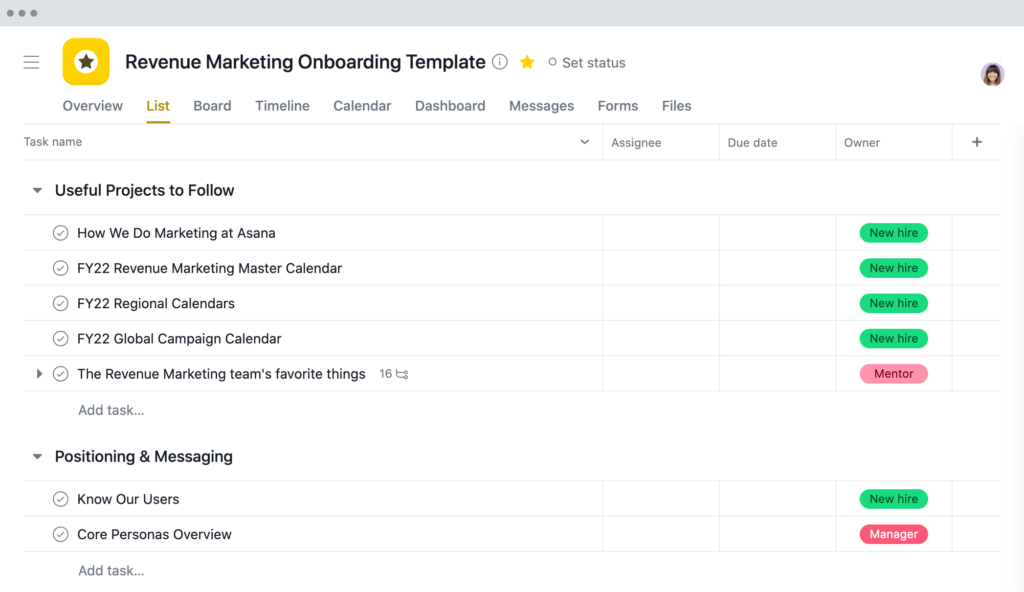Managing distributed teams: 3 ways to build a tight-knit team across time zones

Read this article in French, German , Portuguese, Spanish, or Japanese.
Collaboration today is more global and connected than ever. As leaders of globally distributed teams in Europe, Asia, Australia, and the US—Jessica leads the Revenue Marketing team and Joshua leads the Engagement Marketing team at Asana—we live and breathe this every day.
One of the most challenging aspects of managing team members located in multiple regions is team bonding. How do you create tight connections across countries (or counties), and how do you maintain them over time?
With leaders at some organizations starting to think through how they’ll re-open offices and reunite their teams—whether they’re office-first, fully remote, or hybrid—we wanted to share what we’ve learned over the years leading distributed teams. Here are three ways to build a tight-knit team across time zones.
Create connections from day one
When companies suddenly shifted to remote work, teams that were still hiring grappled with how to onboard new hires from different locations. This has been—and will continue to be—true for leaders of globally distributed teams.
With fewer opportunities for ad hoc information sharing, be extra thoughtful and intentional about onboarding a team member who is working from another location. Document and share everything your new team member needs to know to be successful in their role. On the Revenue Marketing team, we have an onboarding project that outlines our processes, key projects, stakeholders, and files. The onboarding project also includes tasks for inviting new teammates to our core team projects, Slack channels, and recurring meetings. This way, we can give them big welcomes everywhere.

You’ll also want to set up 1:1s between your new hire and as many teammates as you can outside of their home office. These can range from formal briefing sessions to casual (virtual) coffee chats to give your new hire the opportunity to start building relationships with their core collaborators. Jessica also runs a monthly onboarding session with new hires to introduce them to the Revenue Marketing team’s values and culture.
Maximize team meetings
We’re big believers in meeting synchronously with our teams to build rapport and culture. When everyone is meeting live, conversations flow naturally, and you and your team have dedicated time to get to know each other better, even at a distance.
On the Engagement Marketing team, there’s a weekly standup every Monday where we say hi, chit-chat about the weekend, and do an around-the-room (and Zoom) to share what each of us is working on. This meeting alternates between 9am and 4pm PT, so we can accommodate team members in EMEA one week, and APAC and Japan the next. For the people who can’t attend live, they record a short video of themselves talking about their weekly priorities, and we watch these videos in the live meeting.
On the Revenue Marketing side, there’s a monthly all hands for everyone on Jessica’s team. Each month, a team member gives a short, five-minute presentation (specifically, a PechaKucha) about themselves, from their career journey to their family. It’s a great way for people to get to know each other even when we’re all not in the same office.
One-on-one meetings are also essential to creating connections across a distributed team. Regardless of where each person on your team is located, meet with your direct reports weekly and your skip-level reports monthly. This is one of the most valuable uses of your time as you’ll learn a lot about what’s happening in other regions, and your team members get dedicated time with you to ask questions about things they may not usually get answers to.
Ensure team members feel seen
Real talk: It’s harder for team members working in different locations to get recognized for their work. ”Out of sight, out of mind” is unfortunately a reality. If you’re managing a distributed team, be really deliberate and intentional about finding opportunities for your team members in other regions to get visibility and recognition for their contributions.
This could mean presenting at a team meeting or department all hands. At Asana, we host a company Show and Tell every six weeks where a member of each department presents recent accomplishments or work in progress. This is a great way for global team members to get visibility at the company level.
Make sure you’re also looking for ways to give public recognition for a job well done. It can be as simple as a quick shoutout in your team’s Slack channel or, if you have team awards like we do on the Marketing team at Asana, be sure to nominate team members who don’t necessarily share the same home office as you. It’s so rewarding to celebrate individual achievements with the broader team.
Looking for more tips and best practices on hybrid teamwork in a distributed world? Read more posts from our Managing distributed teams series.

